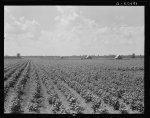Labor recruitment
 “A novel plan of advertising by means of moving pictures was perfected here yesterday by the departure of a coach filled with twenty families from Springfield and vicinity for the plantation of John M. Gracie near Pine Bluff, Ark. This plantation is the largest in the world owned and operated by an individual.
“A novel plan of advertising by means of moving pictures was perfected here yesterday by the departure of a coach filled with twenty families from Springfield and vicinity for the plantation of John M. Gracie near Pine Bluff, Ark. This plantation is the largest in the world owned and operated by an individual.
“For years Mr. Gracie has offered to pay the transportation, expenses en route, and advance money for their livelihood for any laborers, with their families who would work for him. He arrived in Springfield a month ago from Europe, where he had tried to get additions to a large Italian colony that is now on his great estate. Because no assistance is allowed by the United States laws to be given laborers abroad to make possible their migration and the families were so poverty stricken there, he was able to secure only seven families.
“Then on his arrival here, officers of the Wright-Wilson Realty Exchange Company, located in the Woodruff building suggested that he allow them to take moving pictures of the plantation, and that they would show them in different localities and thereby interest farm hands.
“This was done, and with advertisements in the Republican, brought countless inquirers to the offices of the company. C.K. Wright, senior member of the firm, interviewed ninety-seven and fifty-three applicants to work on two respective days.
“Monday Mr. Gracie arrived here again and made arrangements to move twenty families. He has only twenty homes ready at this time. He pays all expenses of transportation.
“The plantation of Mr. Gracie contains 24,000 acres, 11,000 of which are under cultivation. The greater tract is divided into three farms, which are pierced by railroad. These are Rob Roy, New Gascony and Hannaberry.
“The plantation has a frontage of twenty-two miles on both sides of the Arkansas River.
“Twenty-five acres are apportioned to each family, and it takes 400 families, averaging five persons each to work the soil. In addition to a cotton crop which is handled from seed to bale on the plantation, 500 acres of rice was raised last year which averaged forty to sixty bushels to the acre over the country. Nine men worked this crop during the summer, while the cotton-pickers were used to plant and harvest the rice in spring and fall.
“Each of the plantation’s farms has its gin mill, railroad station, merchandise stores, post office, telegraph and telephone office... Mr. Gracie said yesterday that one Italian had gone home with $10,000 after being with him for ten years. That four Italians would clear $400, $800, $1,200 and $1,500 respectively, above all expenses this year, was his assertion.
“Each family is furnished a house and each is paid for his work if the head of the household has not a team. If the tenant has a team, he may rent the land and clear what he can from it.” Republican October 23, 1913.
The photograph is a Delta plantation landscape by Dorothea Lange, collection of the Library of Congress.
Find this article at